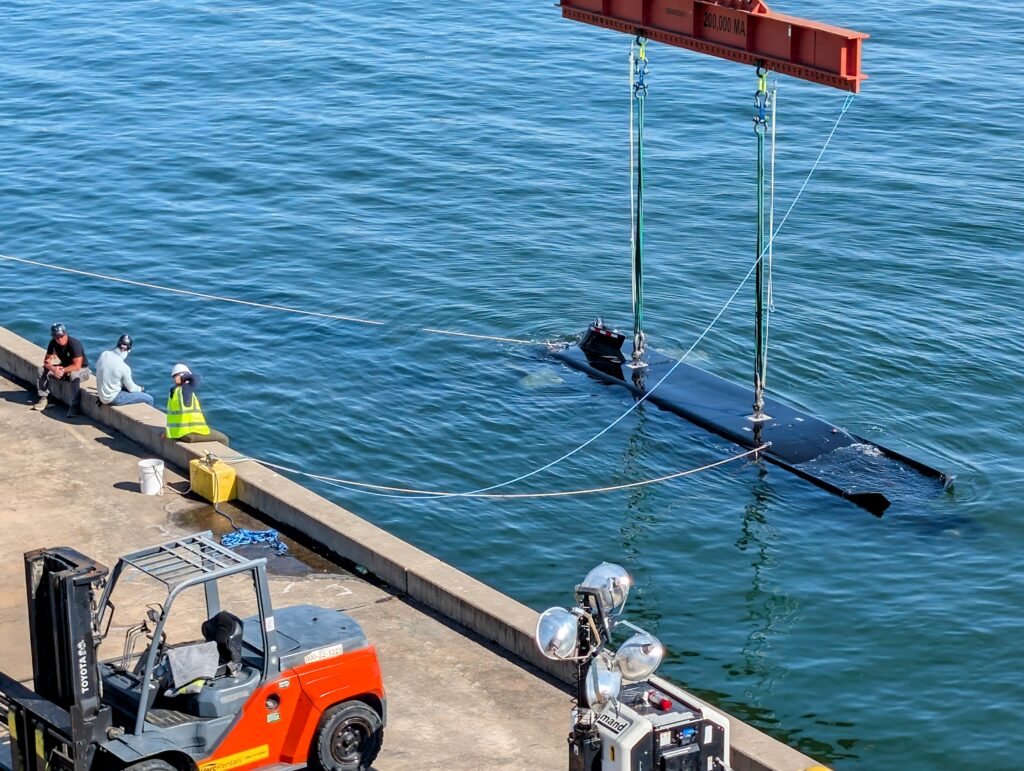The much-anticipated future of two adjacent, waterfront facilities in St. Petersburg’s Innovation District is gradually appearing over the horizon.
City council members heard an update on several city-owned projects and properties Thursday, including the Port of St. Petersburg’s reimagining and the Maritime and Defense Technology Hub’s planned expansion. The long-delayed former initiative is gathering steam, while the latter must navigate a significant obstacle.
James Corbett, city development administrator, began by noting the vastly underutilized port would soon have a new master plan for the first time in 26 years. Officials unveiled redevelopment concepts in June for the aging, multi-use facility and 4.4 acres of adjacent land just south of the downtown core.
“We did receive a tremendous amount of community engagement through the master plan process,” Corbett said. “Most of our support centered around a mixed-use waterfront vision that blends maritime operations with public access and economic activity.”

The city’s consultant is now revising this concept for the port’s redevelopment. Image: City documents.
The city’s first port survey garnered over 3,400 responses and 100 comments. A second focused on the draft concept plan and closed Wednesday. Notably, it does not highlight a “Hub 2.”
Here are the key districts that Moffatt & Nichol, an independent consultancy firm, has proposed for a reimagined Port St. Petersburg following community engagement:
West Wharf Gateway & Harborside Park: A civic-focused waterfront destination connecting downtown to the port. It would feature public plazas, terraced seating, parks, event spaces, waterfront promenades and dining to create “a welcoming space for residents and visitors.”
St. Petersburg Terminal & Cruise Center: Anchored by the Harbor Pier, this district will accommodate cruise ships up to 700 feet and superyachts up to 250 feet. It combines “efficient” port operations with public-facing plazas, pedestrian promenades and “ground transportation zones.”
Recreational Boating & Yacht Precinct: A “premier” hub for leisure and marine enterprises, offering marina slips for recreational vessels up to 100 feet and superyacht berthing. It includes a Yacht Club, pool deck, dining and activated waterfront spaces for year-round activities.
MRO (maintenance, repair and overhaul) Facility & Innovation Hub: Focused on maritime service, maintenance, and technology innovation. Supports superyacht and vessel maintenance, refit operations and research activities, positioning the Port as a global hub for marine enterprise.
“The 2025 Draft Illustrative Master Plan establishes a long-term vision for a vibrant, resilient and diverse working waterfront,” stated Moffat and Nichol. “It balances economic growth, maritime innovation and public access, creating opportunities for residents, businesses and visitors across St. Petersburg, Pinellas County and the Suncoast.”
Corbett said responses to the second survey will guide revisions. He anticipates completing the master plan, first broached in January 2023, by December.

Anduril Industries considered multiple new testing sites before realizing the Maritime and Defense Technology Hub was an ideal location to test its new extra-large autonomous undersea vehicle. Photo by Mark Parker.
The port is one of many assets in the St. Petersburg Innovation District, which is wrapping up its first, long-awaited master plan. Executive director Alison Barlow announced plans for a sister facility that connects to the at-capacity, city-owned Hub, located at 450 8th Ave. SE, in March 2023.
Several city stakeholders have supported building an adjacent Hub 2 on what is now the port’s surface parking lot. The Innovation District has potentially found critical grant funding for the project, which could encompass 50,000 square feet.
Corbett said a U.S. Economic Development Administration (EDA) grant could provide $18 million with a 20% local match. Hub 2 could also receive a $10 million grant, with a 50% match, from the Florida Ports Council.
Pinellas County’s Employment Sites Program would likely provide $2 million, with no matching requirement. Corbett said Barlow will facilitate an economic and feasibility analysis, a requirement for EDA funding.
“If we were to move this forward, because it would be contemplated as a long-term use, there would be a public referendum that would be required,” Corbett added. “One other item that we would need to figure out is parking for that additional facility.”
The Hub and port sit between the USF College of Marine Science and U.S. Coast Guard Sector St. Petersburg. Albert Whitted Airport and Bayboro Harbor border the site to the north and south, respectively.
“Right now, that parking does not exist,” Corbett said. The city and district must identify a location and secure funding for what would likely be a multi-facility garage.
Councilmember Gina Driscoll, a staunch supporter, noted that she will soon request a committee meeting dedicated to the Hub’s long-discussed expansion. “So, we’ll be taking a deeper dive … down the road, should the council choose to accept the new business item,” she said.

